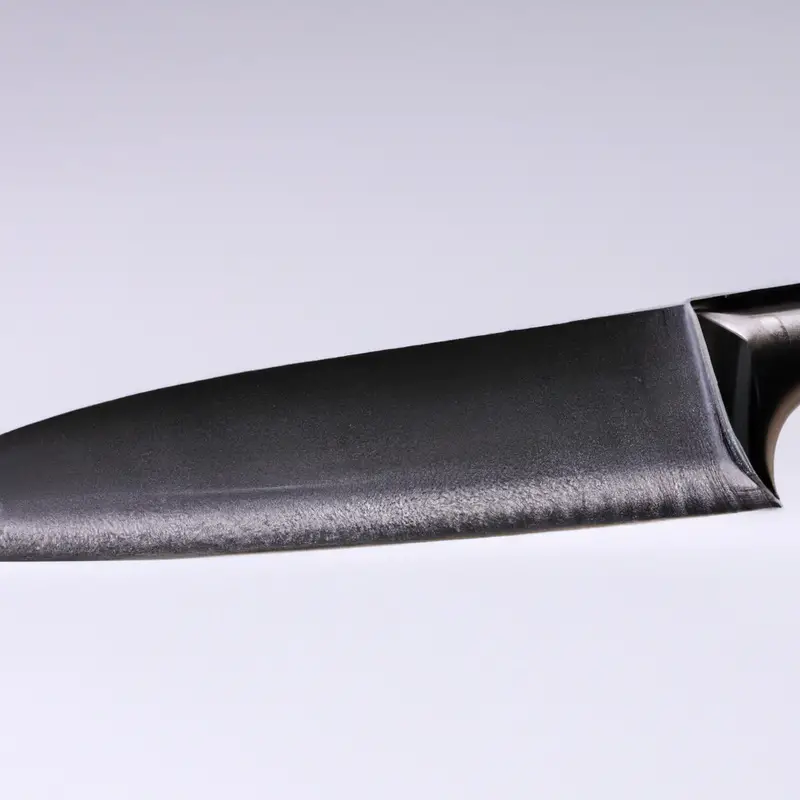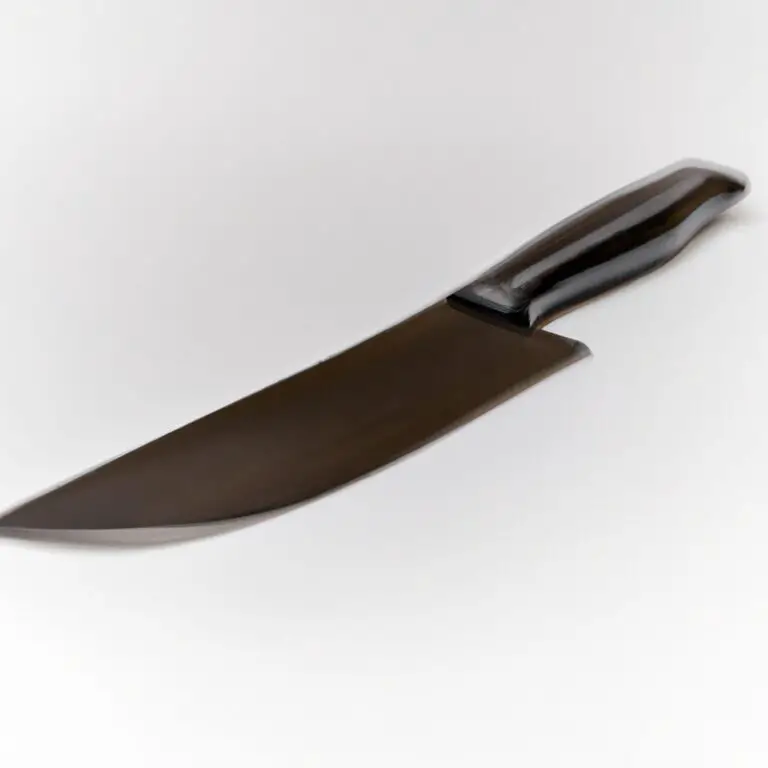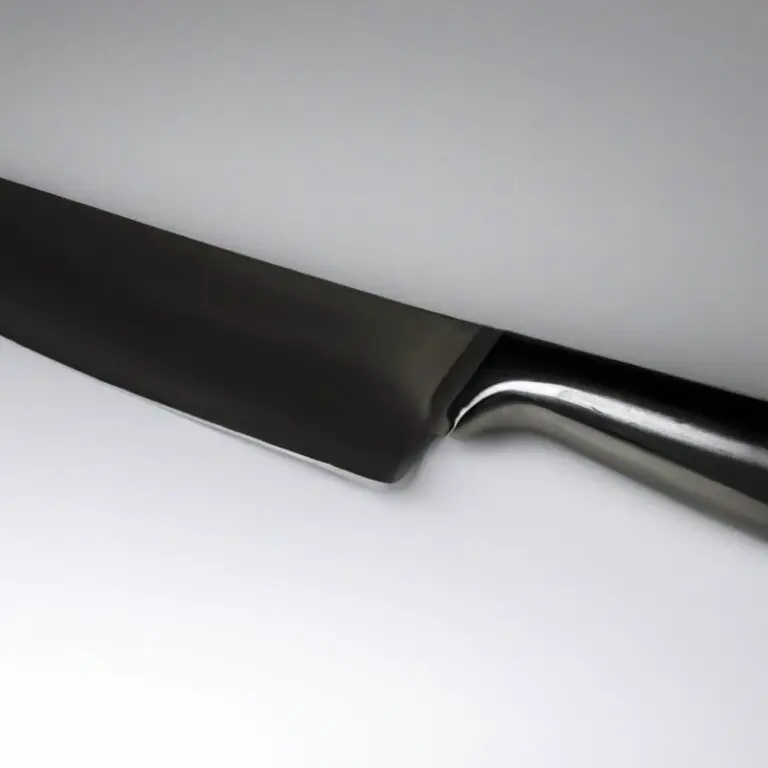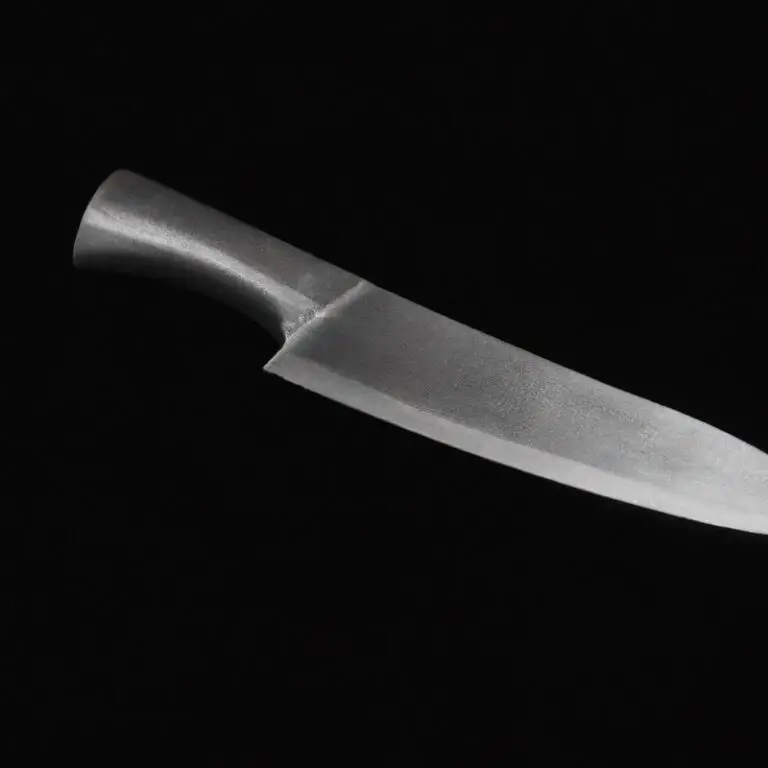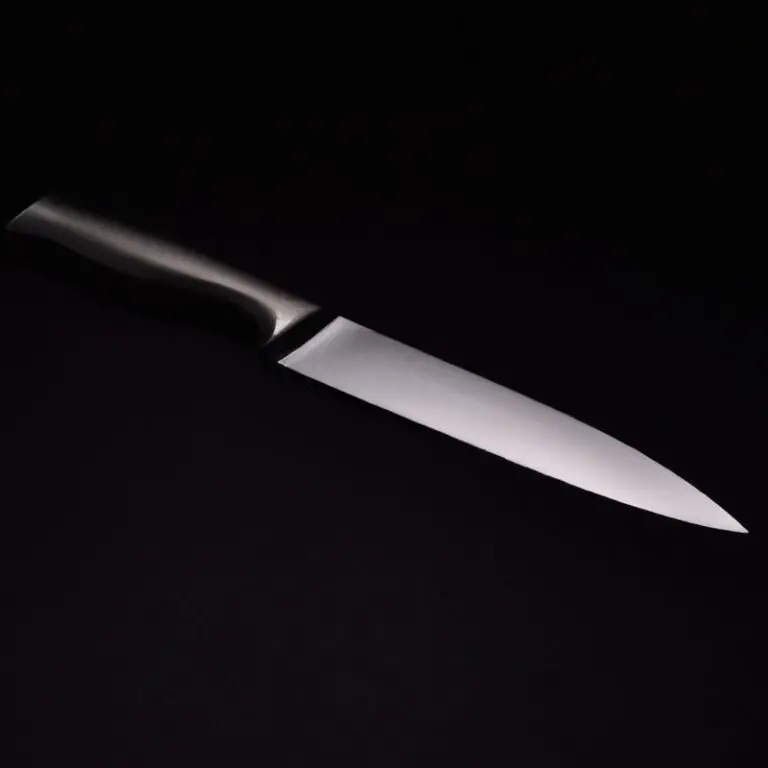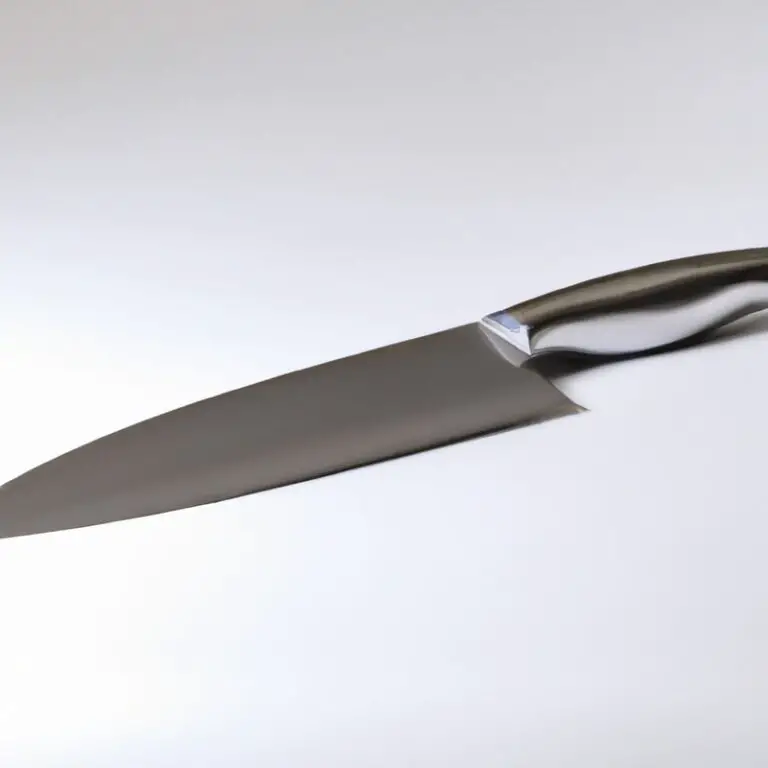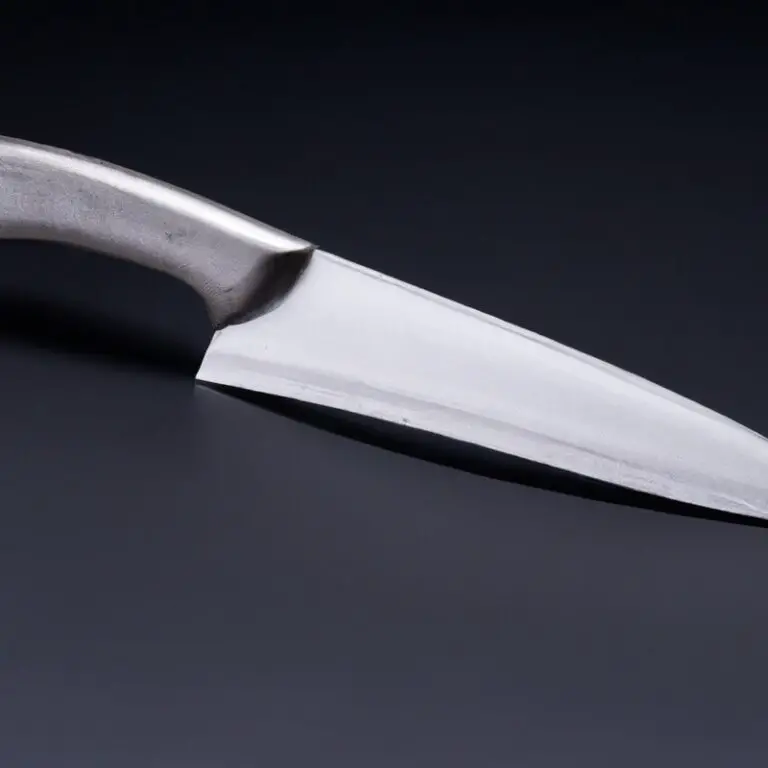How To Cut Through Tough Ingredients With a Santoku Knife? Slice Like a Pro With These Tips!
Key Takeaways:
- A Santoku knife’s unique design makes it ideal for cutting through tough ingredients like meat and vegetables.
- Proper technique and maintenance of the knife’s sharp edge are essential for achieving clean cuts and preventing accidents.
- Invest in a high-quality Santoku knife made with durable materials to ensure longevity and optimal performance.
- With a little practice and attention to detail, anyone can master the art of cutting through tough ingredients with a Santoku knife.
Do you struggle to slice through tough ingredients like root vegetables or thick cuts of meat? The answer may lie in the knife you’re using.
Meet the Santoku knife – a versatile Japanese blade with a sharp and sturdy blade that makes cutting through tough ingredients a breeze.
As someone who loves spending time in the kitchen, I have found that a Santoku knife quickly became my go-to tool for all my prepping needs. In this blog, I will share my knowledge – from the anatomy of a Santoku knife to proper gripping and cutting techniques – to help you become a pro in the kitchen.
| Technique | Advantages | Disadvantages | |
|---|---|---|---|
| Rocking Motion | Moving the knife back and forth in a rocking motion | Efficient for chopping herbs and vegetables | Not suitable for cutting meat and tougher ingredients |
| Scraping Motion | Pushing the knife forward and pulling it back in a scraping motion | Ideal for slicing through meat and poultry, especially when cutting against the grain | Not as efficient for chopping herbs and vegetables compared to the rocking motion |
| Slicing Motion | Moving the knife in a back-and-forth slicing motion | Effective for cutting through tough ingredients like bread and meat | Can be less precise compared to other techniques |
Advantages of Using a Santoku Knife over Other Kitchen Knives
The Santoku knife is a popular choice among chefs and home cooks, and for good reason. Here are some advantages of using a Santoku knife over other kitchen knives:
- Versatility: The Santoku knife features a wide blade with a sharp tip, making it versatile for a range of tasks such as slicing, dicing, and chopping.
- Precision: The flat edge of the Santoku knife allows for precision cutting and a straighter slicing motion without the rocking motion required with other knives.
- Comfort: The ergonomic handle of the Santoku knife provides comfort while cutting for prolonged periods.
- Efficiency: The thinner blade of the Santoku knife reduces drag and friction, allowing for efficient cutting of tough ingredients with less effort.
- Unique design: The unique design of the Santoku knife combines the features of both a Japanese chef’s knife and a Western-style chef’s knife, making it a great all-around tool in the kitchen.
Overall, using a Santoku knife can enhance your cutting experience and make slicing through tough ingredients a breeze.
Anatomy of a Santoku Knife: Different Parts and their Functions
A Santoku knife consists of three main parts – the blade, handle, and bolster. The blade is generally around 5-7 inches in length, slightly curved towards the tip, and wider than a traditional chef’s knife.
The flat edge of the blade is perfect for chopping and slicing, while the curved edge is ideal for rocking back and forth for more delicate tasks like mincing.
The handle should be comfortable to grip, firm, and balanced to avoid any unnecessary strain on the hand. The bolster, a thick junction where the blade meets the handle, provides balance and stability during the cutting process.
It helps to secure the knife in place and protects fingers from slipping onto the blade during use.
The spine of the blade, the top portion of the blade that serves as a guide when cutting, usually tapers and thins out towards the tip. Meanwhile, the heel of the blade near the handle is ideal for tougher cutting jobs like meat and bone.
Overall, a Santoku knife’s unique design with a flatter blade, curved tip, and comfortable handle, makes it a versatile, effective, and efficient cutting tool for slicing, chopping, and dicing.
Understanding the different parts of the Santoku knife and their functions can help improve your cutting skills and ensure the best results.
Why a Sharp Blade is Crucial for Cutting Tough Ingredients
A sharp blade is crucial for cutting tough ingredients for several reasons. Firstly, a sharp blade reduces the amount of force needed to cut through tough ingredients, making the process much easier and efficient.
It also ensures that the ingredient is cut cleanly and precisely, reducing the risk of damaging or bruising the produce.
A dull blade can slip or crush the ingredient, leaving an undesirable finish or causing injury. A sharp blade, on the other hand, provides clean, straight cuts with less force and precision, maximizing the use of the ingredient, reducing wastage, and saving time.
Additionally, a sharp blade reduces cooking time because it enables the ingredient to cook more evenly, resulting in a more consistent flavor.
A dull blade cannot cut through tough ingredients, such as meat, easily, making it challenging to create thin slices and resulting in uneven cook times. In summary, a sharp blade is essential when cutting tough ingredients as it makes the process more efficient, safer, and ensures that the ingredient is cut cleanly and precisely, resulting in a more consistently cooked and flavored dish.
Techniques for Proper Holding and Gripping of the Santoku Knife
To properly hold and grip a Santoku knife, grip the handle firmly with your dominant hand and place your index finger on the spine of the blade for control. With your other hand, hold the ingredient to be cut with curled fingers to avoid injury.
Use a chopping motion and keep the blade perpendicular to the cutting board to create clean cuts.
Avoid twisting the blade or applying too much pressure. Practice proper technique and grip to improve accuracy and efficiency while cutting through tough ingredients.
How to Choose the Right Cutting Board for Maximum Efficiency
When choosing a cutting board, it is best to avoid glass, metal, or marble surfaces as they can damage your knife’s edge. Instead, opt for a wooden or plastic cutting board.
Wooden boards, like maple or bamboo, are durable and won’t dull your knife’s edge.
Plastic boards are also a great option as they are lightweight, affordable, and easy to clean. When choosing a board, consider its size, weight, and stability.
A heavier board will be more stable, while a lighter board will be easier to move around.
Additionally, using a separate cutting board for meat and vegetables can prevent cross-contamination. Make sure to clean your cutting board with soap and hot water after each use to avoid the buildup of bacteria.
By choosing the right cutting board, you can maximize your efficiency in the kitchen and keep your Santoku knife in top condition.
Prepping Tough Ingredients: Tips and Tricks for Easier Cutting
Prepping tough ingredients for easier cutting involves a few tips and tricks that can make the process smoother and more efficient. First, consider parboiling or microwaving the tough ingredient for a few minutes to soften it up.
Secondly, use a sharp Santoku knife with a blunt tip for safety.
Next, hold the Santoku knife on the blade’s flat side and cut steadily, using a rocking motion. If the ingredient is still difficult to cut, try cutting it into smaller pieces before proceeding.
Lastly, use a steady cutting board to avoid accidents and maintain even pressure while using the knife.
By following these tips, prepping tough ingredients for cooking or serving can be done with ease and convenience using a Santoku knife.
How to Make Clean Cuts without Bruising or Damaging the Ingredient
To make clean cuts without bruising or damaging tough ingredients with a Santoku knife, there are techniques that you need to learn. First, ensure that your blade is sharp.
Use a slicing motion as you cut and avoid the use of excessive force.
Hold the ingredient with your non-dominant hand and grip the knife handle with your dominant one. Use a smooth and continuous slicing motion, which involves moving the knife from the back of the blade to the tip.
Avoid using a sawing motion as it can damage the delicate fibers of the ingredient.
Additionally, choose a cutting board that helps preserve the blade’s sharpness. Use a wooden or bamboo board instead of plastic or glass.
Lastly, practice makes perfect.
With time and practice, you will get the hang of it and make clean cuts without damaging the ingredient.
Maintaining a Razor-Sharp Edge: Tips for Sharpening Your Santoku Knife
Maintaining a sharp edge on your Santoku knife is essential to ensure smooth cutting of tough ingredients. Here are some tips for sharpening your knife:
- Use a sharpening stone: A sharpening stone is the most effective tool for sharpening your knife. Start with a coarse grit stone and then finish with a fine grit to ensure a razor-sharp edge.
- Use the correct angle: Hold the Santoku knife at a 15 to 20-degree angle to the sharpening stone. Maintain this angle as you sharpen the blade.
- Use a honing rod: A honing rod is an effective tool for maintaining the sharp edge of your Santoku knife. Use it regularly to keep the cutting edge aligned.
- Sharpen regularly: Sharpen your Santoku knife frequently, depending on how often you use it. Regular sharpening will ensure optimal cutting performance.
- Use a leather strop: A leather strop is useful for maintaining the sharp edge of your Santoku knife. Run the blade along the strop to realign the edge and remove any burrs.
By following these tips, you can maintain a razor-sharp edge on your Santoku knife and cut through tough ingredients with ease.
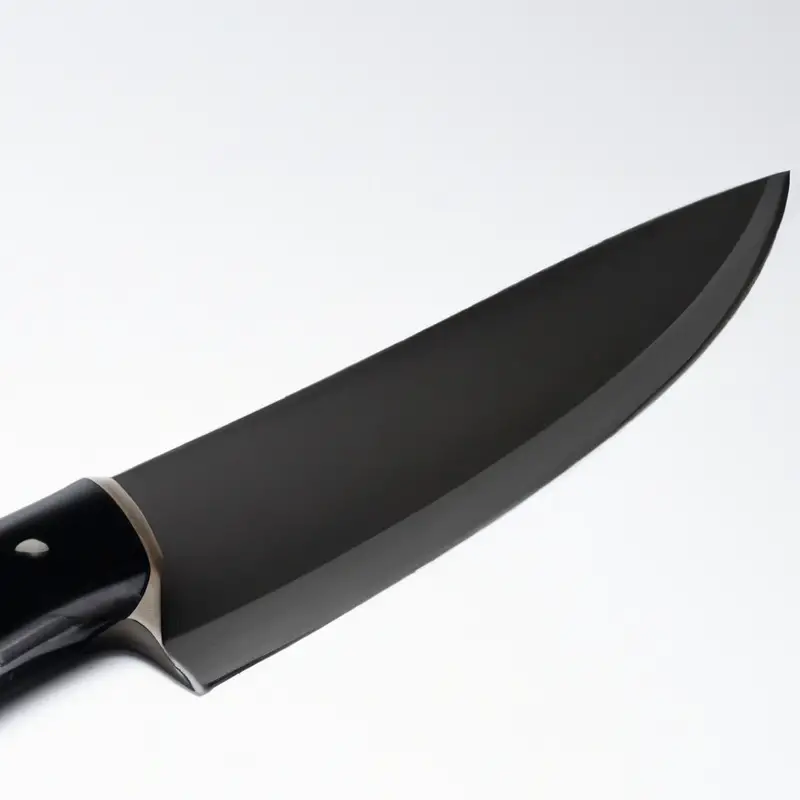
Safety Measures to Consider When Using a Santoku Knife
Safety is a top priority when using any knife, and the Santoku knife is no exception. Here are some safety measures to consider when using a Santoku knife:
- Keep the blade sharp: A dull blade requires more force to cut, increasing the risk of slips and accidents. Use a sharpening stone or honing rod to keep your Santoku knife razor-sharp.
- Use a cutting board: Avoid holding the ingredient in your hand while cutting, as this can lead to injuries. Instead, use a sturdy cutting board to stabilize the ingredient and prevent the knife from slipping.
- Grip the Handle Firmly: Place your index finger on top of the knife’s spine and grip the handle firmly with your other hand. This provides better control and accuracy while cutting.
- Use a cutting motion: Never use a sawing motion with a Santoku knife, as this can lead to injuries. Instead, use a swift, slicing motion with the blade.
- Practice proper storage: When not in use, store your Santoku knife in a knife block or protective cover to prevent accidents.
By following these safety measures, you can safely and efficiently cut through tough ingredients with your Santoku knife.
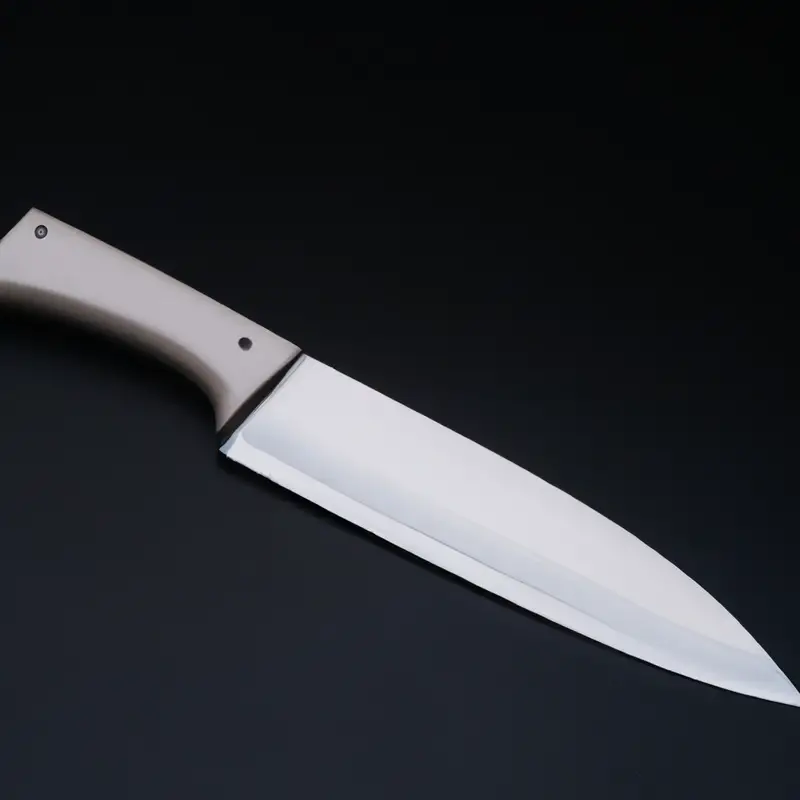
Final Verdict
Mastering the art of cutting through tough ingredients with a Santoku knife is an essential skill for any home cook or professional chef. Through proper holding and gripping techniques, choosing the right cutting board, and maintaining a razor-sharp edge, you can effortlessly cut through even the toughest ingredients with precision and ease.
By following the tips and tricks outlined in this article, you can take your culinary skills to the next level and impress your guests with your knife skills.
Remember, safety measures should always be considered when using a Santoku knife, so exercise caution and take the necessary precautions. With consistent practice and attention to detail, you’ll soon become a master of the Santoku knife and elevate your cooking game to new heights.

